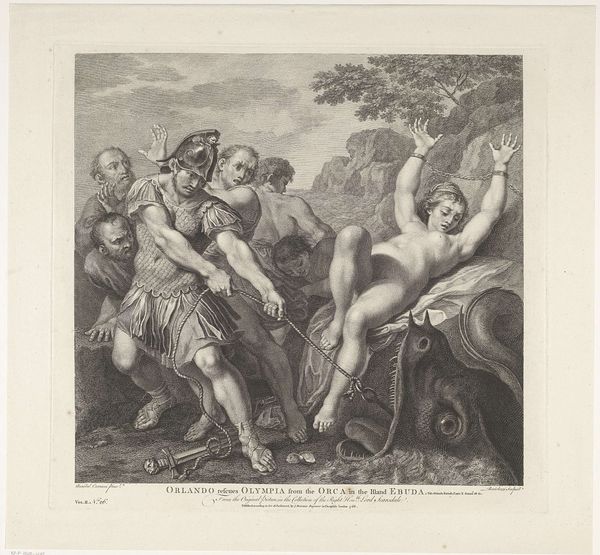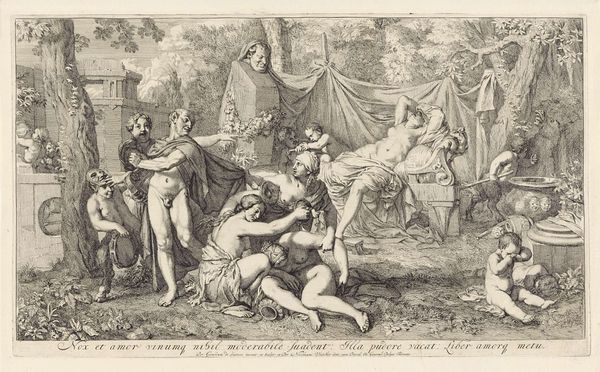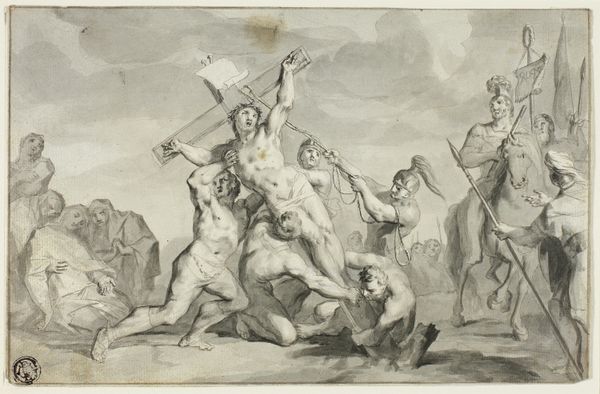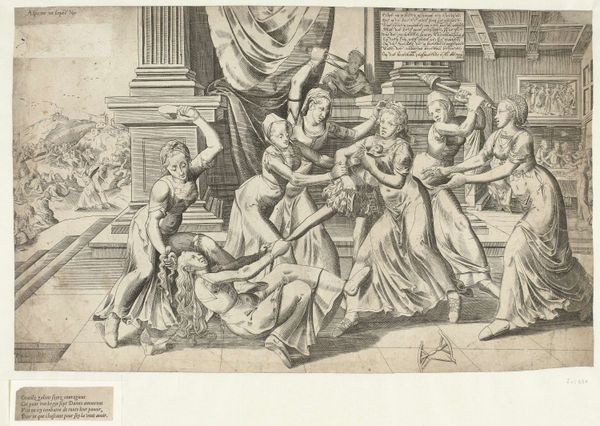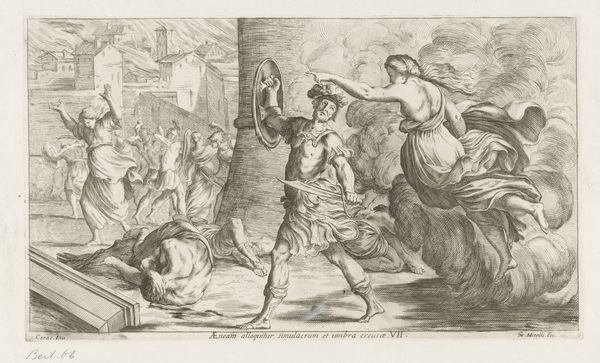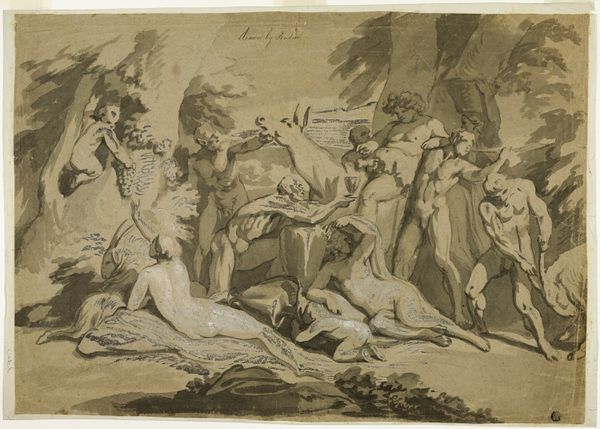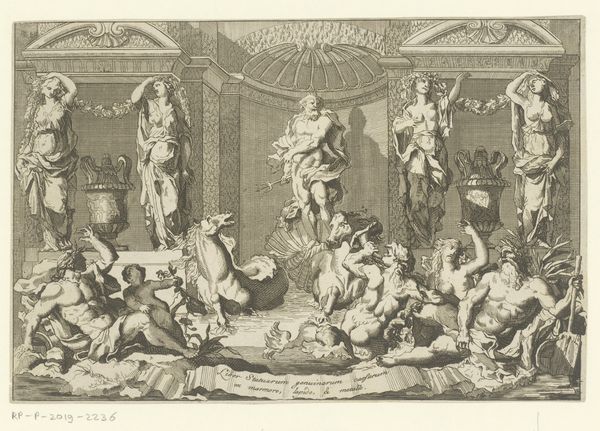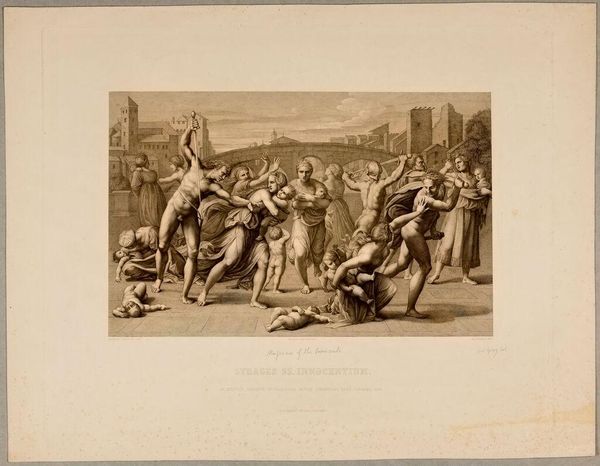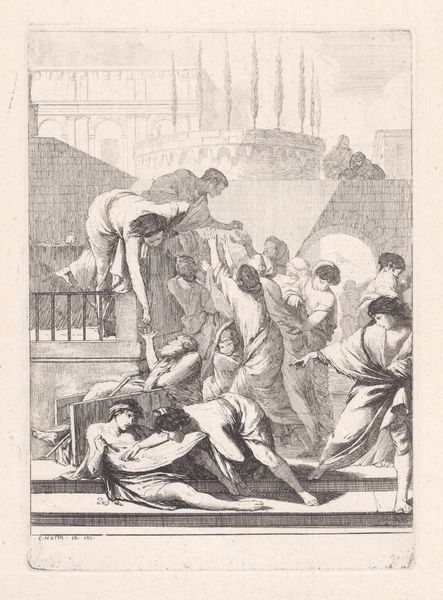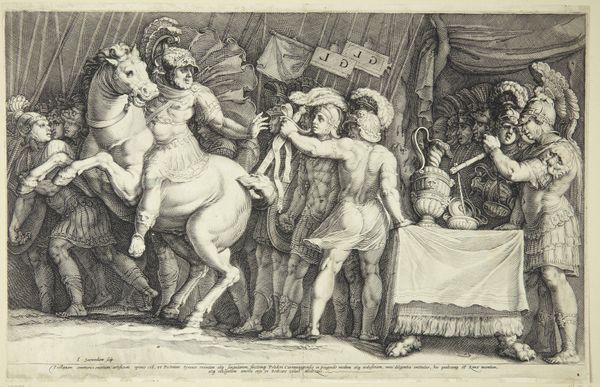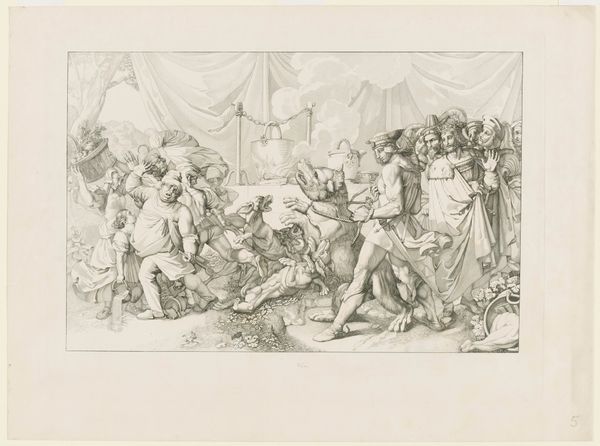
drawing, pen
#
drawing
#
neoclacissism
#
narrative-art
#
pen illustration
#
figuration
#
pen-ink sketch
#
pen
#
history-painting
#
academic-art
Dimensions: 383 mm (height) x 512 mm (width) (bladmaal)
Johannes Wiedewelt created this drawing called "Gindanische Quinder. Herodotius Lib. IV" sometime in the 18th century. It depicts a scene derived from Herodotus' Histories, showcasing the women of the Gindanes tribe, known for adorning themselves with the skin of crocodiles. This work reflects the 18th-century fascination with classical antiquity and the desire to visually document the world as described by ancient historians and a moment where art academies trained artists in the canon of European art. It's important to note that the selection and interpretation of historical texts like Herodotus were not neutral. They were shaped by the social and political concerns of Wiedewelt’s time in Denmark, including its own colonial power dynamics. How might the artist’s depiction of the Gindanes women reinforce or challenge existing European perceptions of non-European cultures? To fully understand the artwork, one must look at the scholarship around the Age of Enlightenment, the history of European colonialism, and the institutional history of the art academy that shaped the artist. By considering these factors, we can better understand the artwork and the broader cultural context in which it was made.
Comments
No comments
Be the first to comment and join the conversation on the ultimate creative platform.
